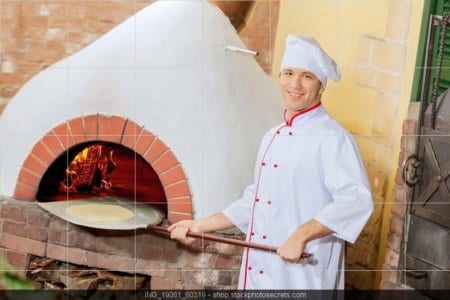Capital Spending is the tax term for the day. Gavrilov and Co brings you more restaurant tax guidance in this article. Yes, we are back in the restaurant niche, for this week’s blog. That is not to say that other businesses can not learn from the restaurant rules on Capital Spending and other types of small business tax deductions.
Capital Spending: From Kitchen to Front of House

You are surrounded by equipment that radiates “capital spending.” It is essential for any restaurant. Your chef’s stove and flat-top, that giant walk-in refrigerator, those industrial fryers, and stylish stone pizza ovens.
When you buy, you create capital spending. Or when you buy the big stuff, like your kitchen equipment, did you know the TCJA (Tax Cuts and Jobs Act) has a bonus for you?
- It’s a bonus depreciation provision. We have blogged about this previously. But as the tax season heats up, we are bringing you this reminder blog and a review of a few key points.
- The bonus allows you to immediately write off 100 percent of the cost of equipment. Used or new equipment will qualify, as long as you bought it after Sept. 27, 2017. That’s nice.
- Special Alert: Don’t try this totally on your own. You need to have a talk with your tax professional. Some states are still working under old rules, and only your tax professional knows for sure.
Capital Spending and Tax Planning
Here at Gavrilov & Co, our executive tax planners look at more than one phase of your financial and tax life. While you are worrying about this year’s taxes, we are projecting plans for 1,5,10 years into the future for your tax situation. After all, we both know that will change, as your restaurant grows.
Let’s sit down and have a talk about your restaurant and your individual tax situation. Only then can we assist you in choosing the right way to deduct your asset purchases. Until then, these are some focus points for your thoughts on taxes coming soon for your restaurant.
Capital Spending and Tax Alternatives

How large your restaurant is and how much profit you make matters when you look at your capital spending and at the depreciation bonus.
“You may find you’re better off balancing expensing between the bonus-depreciation provision and the Internal Revenue Code’s Section 179 expensing, which also expands under the TCJA.”
A little visit to the IRS online resource helps you demystify the problem,
1. Let’s check the tax code. “Section 179 allows taxpayers to deduct the cost of certain property as an expense when the property is placed in service.”
2. They add, “For tax years beginning after 2017, the TCJA increased the maximum Section 179 expense deduction from $500,000 to $1 million.”
3. Now we see that the “phase-out limit increased from $2 million to $2.5 million. By the way, the IRS wants you to know these amounts are indexed for inflation for tax years beginning after 2018.”
More Tax Credits and Deductions: Delicious Advantages for Restaurants
You might have heard about the tax credits restaurant owners are beginning to enjoy courtesy of the TCJA. Now that you have a grasp of capital spending, let’s take a quick look at a few more items on your tax credit shopping list.
- One that bears mentioning is the Work Opportunity Tax Credit. (WOTC) Thus, we remind you that J A in TCJA means “Jobs Act.”
- And this tax credit really deserves the name. The IRS gives you tax benefits for hiring and retaining employees who often face difficult barriers to their employment. So if you have hired workers from any of the below-listed groups, you qualify:
“The Work Opportunity Tax Credit (WOTC) is a Federal tax credit available to employers for hiring individuals from certain targeted groups who have consistently faced significant barriers to employment. WOTC joins other workforce programs that incentivize workplace diversity and facilitate access to good jobs for American workers.”
The WOTC Listed Groups
- Qualified IV-A Recipient

Now, How Are We Going to Depreciate This Pizza Oven? - Qualified Veteran
- Ex-Felon
- Designated Community Resident (DCR)
- Vocational Rehabilitation Referral
- Summer Youth Employee
- Supplemental Nutrition Assistance Program (SNAP) Recipient
- Supplemental Security Income (SSI) Recipient
- Long-Term Family Assistance Recipient
- Qualified Long-Term Unemployment Recipient
Of course each group has a corresponding paper and form for filing and bookkeeping purposes.
Keep in mind this tax credit is generally equal to 40 percent of first-year wages for the respective employee up to $6,000.
Don’t Ignore Another Big Tax Credit: Tipping and Taxes
Likewise, take advantage of the FICA tax reimbursement credit. We hope you as a restaurant owner are aware. The IRS gives you this credit if you pay for taxes on tips made by your employees. Tipping is certainly a big tax issue within the restaurant industry.
We have more information concerning this big issue.
For more facts and procedures about taxes and tipping, we have written blogs about your part as well as your employee’s part of this responsibility. So please refer to our previous articles.
A Few Take-Aways: More Points about Capital Spending
You should link your understanding of Capital Spending for your restaurant with consideration of the depreciation of some expenses.
- When purchasing equipment for your restaurant, you can either deduct the cost of the equipment in the year in which it was purchased.

Reading a Beautiful Menu is a Treat. To us, helping You Control Capital Spending is Just as Delicious - Or alternatively, you can deduct it in smaller amounts as its value depreciates over the course of several years.
- More expensive equipment, such as an oven, is often best to depreciate to maximize your tax savings on it. It might be of great help to you to take a look at the cost segregation guide in which the government lists property that is best depreciated over a certain span of time.
You might be surprised as to what is considered a distributive cost or service as opposed to a building or building component. For your information, the depreciation time between the two varies from 5 to 39 years. So it’s best to be on the same page when you face the IRS.
We hope your restaurant is having a wonderful spring awakening with all the fresh and delicious new spring items for your exciting new seasonal menu. Gavrilov and Co is here with fresh news about restaurant taxes, accounting, and bookkeeping. Let us help you keep your books as sparkling clean as your crystal and flatware. Bon Appetit!



